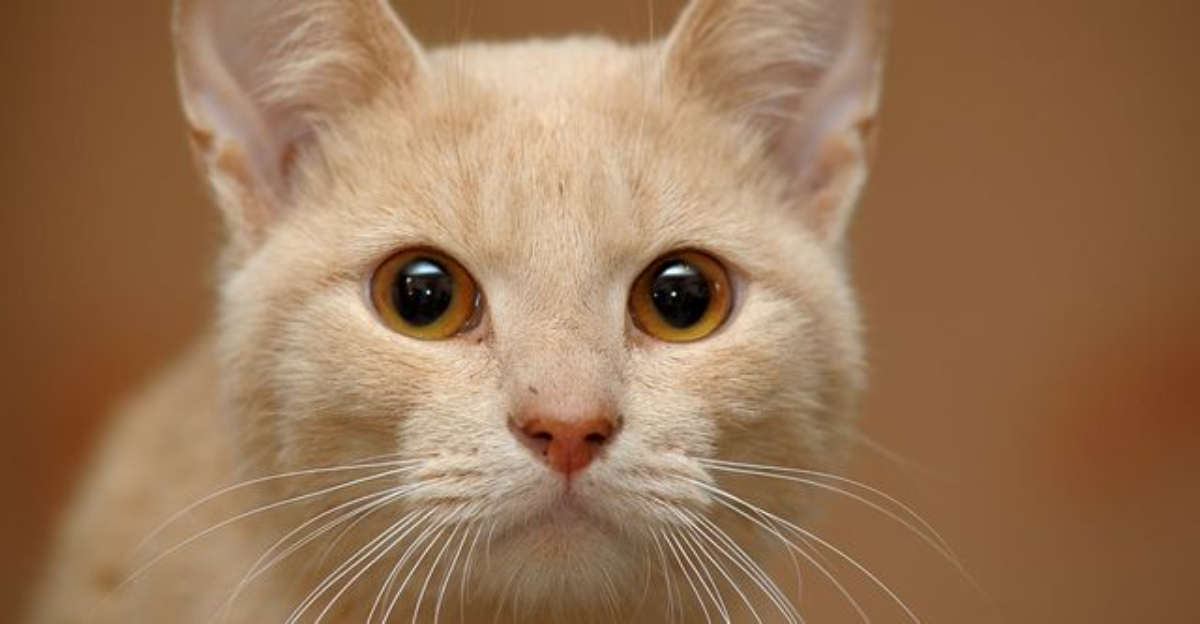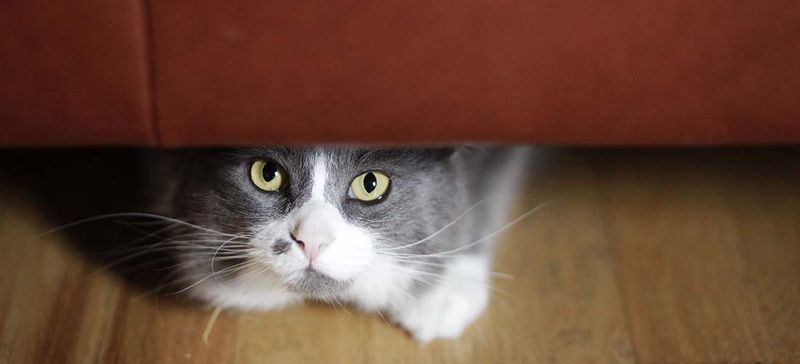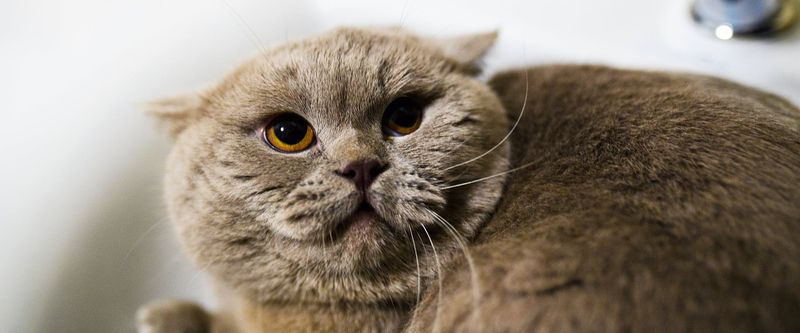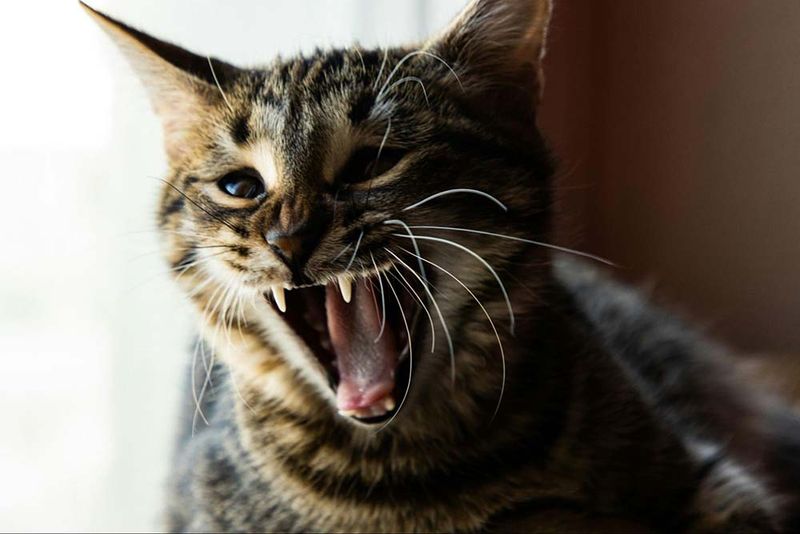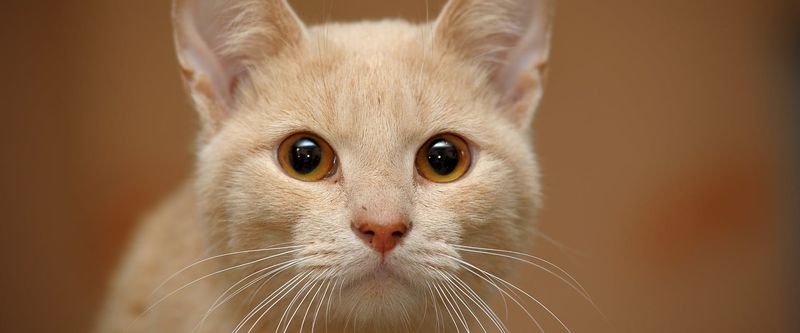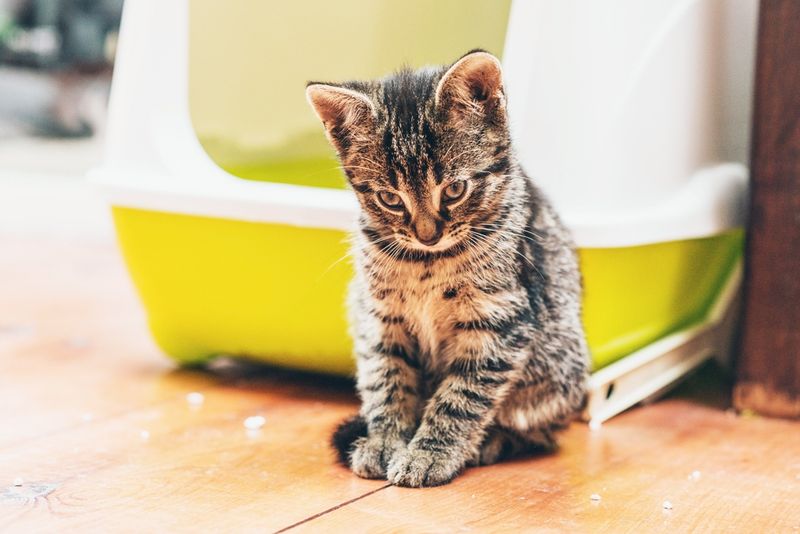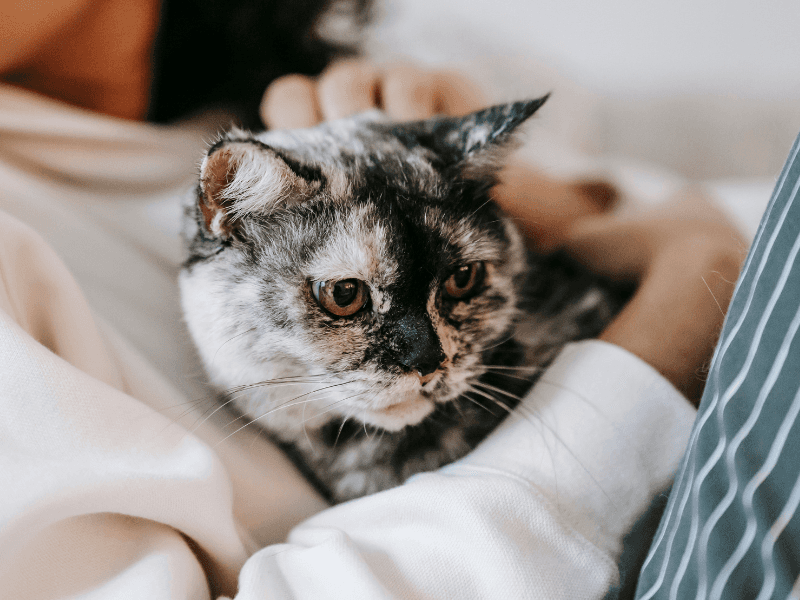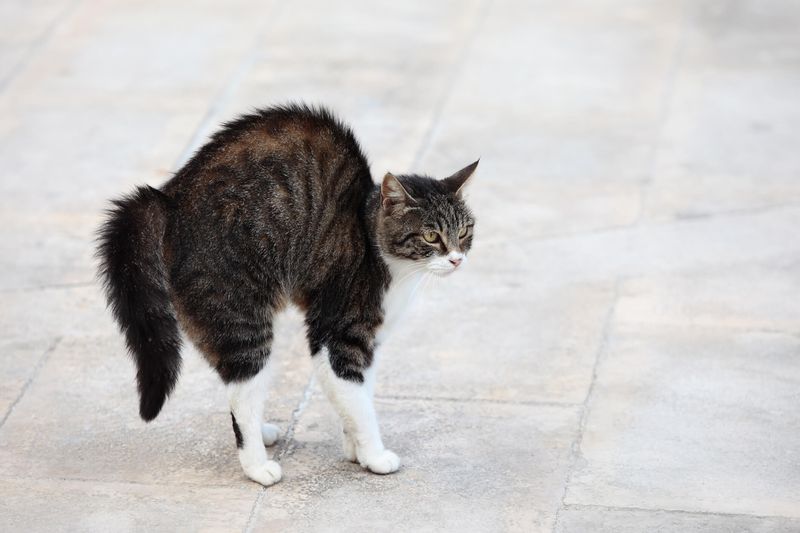📖 Table of Content:
Cats are naturally alert and highly attuned to their surroundings, relying on a sense of safety to fully relax and express their true personalities. A stable, secure environment allows them to eat, sleep, and play without fear or hesitation. When something feels off, even subtle changes can disrupt that sense of peace.
Discomfort or anxiety in the home can lead to noticeable shifts in behavior, many of which are easily misunderstood. Actions like hiding, avoiding interaction, or over-grooming often reflect a deeper feeling of insecurity. These signals are your cat’s quiet way of saying that something in their world doesn’t feel right.
Understanding what these behaviors mean is the first step toward restoring calm. Simple changes to routine, environment, or social dynamics can often make a big difference. Creating a space where a cat feels consistently safe builds trust and strengthens the human-animal bond over time.
1. Excessive Hiding
Cats naturally seek shelter occasionally, but a cat who spends most of her time hidden under furniture or in closets is telling you something’s wrong. This behavior indicates she doesn’t feel secure in the open spaces of your home. Look for patterns in when she hides.
Does it happen when certain people visit or during specific activities like vacuuming? These clues can help identify what’s triggering her fear. Provide more hiding spots like covered beds or cat tunnels throughout your home. This gives her control over her environment and allows her to observe from safety.
2. Flattened Ears
Ear position speaks volumes about your cat’s emotional state. When her ears press flat against her head, she’s experiencing fear or feeling threatened. This defensive posture prepares her for potential danger. Pay attention to when this happens. Is it during thunderstorms? When the neighbor’s dog barks?
Identifying triggers helps address the root cause of her anxiety. Don’t force interaction when you notice flattened ears. Give her space and time to calm down naturally. Approaching a scared cat can intensify her fear and potentially lead to defensive scratching or biting.
3. Increased Startling
A cat who jumps at the smallest sounds or movements is showing clear signs of nervousness. This heightened startle response means she’s constantly on edge, unable to relax in her environment. Normal cat alertness differs from fear-based startling. A secure cat might notice noises but quickly return to relaxing, while a frightened one remains tense or runs away.
Create a calmer sound environment by using white noise machines or soft background music. Establish predictable routines so your cat knows what to expect throughout the day, reducing surprise elements that might trigger her anxiety.
4. Frequent Hissing
Hissing isn’t just an expression of anger – it’s primarily a defensive warning that signals fear. When your cat hisses regularly at family members, visitors, or other pets, she’s communicating that she feels threatened and unsafe.
Never punish hissing, as it’s your cat’s way of setting boundaries when she feels vulnerable. Respect this communication and give her space when she displays this behavior. Address the underlying cause by carefully observing what triggers the hissing. Gradual, positive exposure to whatever frightens her can help, using treats and calm environments to build new, positive associations.
5. Dilated Pupils
Wide, fully dilated pupils that don’t match the lighting conditions signal that your cat feels threatened. These ‘dinner plate’ eyes indicate her fight-or-flight response has activated, preparing her body for potential danger. Notice what happens just before her pupils dilate.
This reaction happens quickly and provides valuable information about what’s triggering her fear response. When you spot dilated pupils, move slowly and speak softly. Avoid direct eye contact, which cats can interpret as threatening. Give her an escape route and don’t corner her, as this will only intensify her fear.
6. Inappropriate Elimination
Finding urine or feces outside the litter box often signals stress, not spite. Cats who feel unsafe may avoid using their litter box, especially if it’s located in an area where they feel vulnerable or trapped. Check the litter box location first. Is it in a high-traffic area?
Near noisy appliances? Next to the dog’s bed? These factors can make your cat too anxious to use it properly. Provide multiple litter boxes in quiet, accessible locations with clear escape routes. Clean them regularly and consider using pheromone diffusers nearby to create a sense of security around these essential facilities.
7. Reduced Grooming
Cats are naturally fastidious creatures who take pride in their appearance. When grooming habits change dramatically, it often signals stress or insecurity. A cat who feels unsafe may stop grooming entirely or groom excessively to self-soothe. Matted fur, greasy coat, or a generally unkempt appearance suggests your cat has abandoned normal self-care routines due to anxiety.
In contrast, bald patches might indicate over-grooming from stress. Monitor grooming patterns alongside other behavioral changes. These observations provide valuable clues about your cat’s emotional state and can help you identify when environmental changes are affecting her sense of security.
8. Constant Vigilance
Deep, restful sleep is a clear sign of a relaxed cat, and most will doze throughout the day when they feel comfortable. Cats who stay alert, jolt awake from light sleep, or seem restless may be feeling insecure. Body language matters—those who sleep stretched out and belly-up are showing they feel safe and at ease.
A cat who always sleeps in tight, defensive positions with limbs tucked under her body is protecting vulnerable areas. Create elevated resting spots where she can observe her surroundings while feeling protected. Window perches, cat trees, and shelves give her vantage points to monitor potential threats while maintaining a safe distance from floor-level activity.
9. Aggressive Tail Movements
Your cat’s tail acts as an emotional barometer. Rapid, agitated tail flicking or thumping indicates irritation and anxiety. A puffed-up tail signals fear and an attempt to appear larger to potential threats. Low, tucked tails reveal vulnerability and insecurity.
This posture, combined with a crouched body position, shows your cat is trying to make herself smaller and less noticeable when she feels threatened. Learn to read these tail signals early, before fear escalates to panic. This awareness allows you to address environmental stressors before they cause severe distress or trigger fight-or-flight responses that might result in aggression or escape attempts.
10. Decreased Appetite
A sudden loss of interest in food often indicates stress or anxiety in cats. When your normally food-motivated feline starts leaving kibble untouched, her environment likely feels threatening enough to override basic hunger instincts. Track eating patterns alongside environmental changes. Did the change coincide with new furniture, visitors, or schedule disruptions?
Food avoidance is particularly concerning as it can quickly lead to health complications in cats. Try feeding in quieter, more private locations away from household traffic. Use elevated feeding stations where your cat can see her surroundings while eating, reducing vulnerability during this focused activity when her guard would naturally be down.
